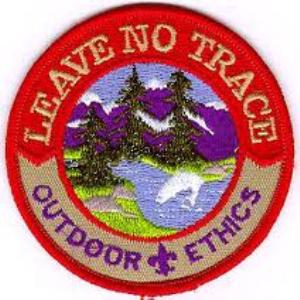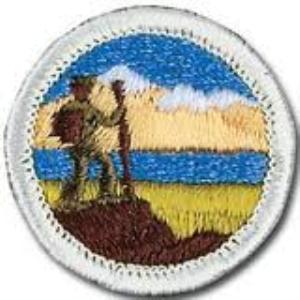|
|
|
|
|
|
|
|
|
|
|
|
|
 |
 |
 |
 |
|
 |
 |
 |
 |

|
Leave No Trace is a national and international program
designed to assist outdoor enthusiasts with their decisions about how to
reduce their impacts when they hike, camp, picnic, snowshoe, run, bike,
hunt, paddle, ride horses, fish, ski or climb. The program strives to
educate all those who enjoy the outdoors about the nature of their
recreational impacts as well as techniques to prevent and minimize such
impacts. Leave No Trace is best understood as an educational and ethical
program, not as a set of rules and regulations. Leave No Trace
information helps public land visitors understand and practice minimum
impact skills and ethics.
The Leave No Trace program is a combination of science and common
sense for enjoying the outdoors responsibly. The message is framed under
seven principles:
- Plan Ahead and Prepare
- Travel and Camp on Durable Surfaces
- Dispose of Waste Properly
- Leave What You Find
- Minimize Campfire Impacts
- Respect Wildlife
- Be Considerate of Other Visitors
Remember the Leave No Trace is a set of outdoor ethics, not rules.
The
difference between rules and ethics is:
| Rules are
what
you follow when someone is
watching. |
| Ethics
are what
you follow when no one is
watching! |
|
|
 |
 |
|
 |
 |
 |
 |
 |
 |
 |
 |
|
 |
 |
 |
 |

|
- Show that you know first aid for injuries or illnesses that
could occur while hiking, including hypothermia, heatstroke,
heat exhaustion, frostbite, dehydration, sunburn, sprained
ankle, insect stings, tick bites, snakebite, blisters,
hyperventilation, and altitude sickness.
- Explain and, where possible, show the points of good hiking
practices. including the principles of Leave No Trace, hiking
safety in the daytime and at night, courtesy to others, choice
of footwear, and proper care of feet and footwear.
- Explain how hiking is an aerobic activity. Develop a plan
for conditioning yourself for 10-mile hikes, and describe how
you will increase your fitness for longer hikes.
- Make a written plan for a 10-mile hike, including map
routes, a clothing and equipment list, and a list of items for a
trail lunch.
- Take five hikes, each on a different day, and each of at
least ten continuous miles. Prepare a hike plan for each hike.*
- Take a hike of 20 continuous miles in one day following a
hike plan you have prepared.*
- After each of the hikes (or during each hike if on one
continuous "trek") in requirements 5 and 6, write a short report
of your experience. Give dates and descriptions of routes
covered, the weather, and interesting things you saw. Share this
report with your merit badge counselor.
*The hikes in requirements 5 and 6 can be used in fulfilling
Second Class (2a) and First Class (3) rank requirements, but
only if Hiking merit badge requirements 1, 2, 3, and 4 have been
completed to the satisfaction of your counselor. The hikes of
requirements 5 and 6
cannot be used to fulfill requirements of other merit
badges.
|
|
 |
 |
|
Icon
|
File Name
|
Comment
|
|
 |
Hiking.doc |
Hiking Merit Badge Worksheet |
|
|
 |
 |
 |
 |
|
|
|
|
|
|
|
|
|